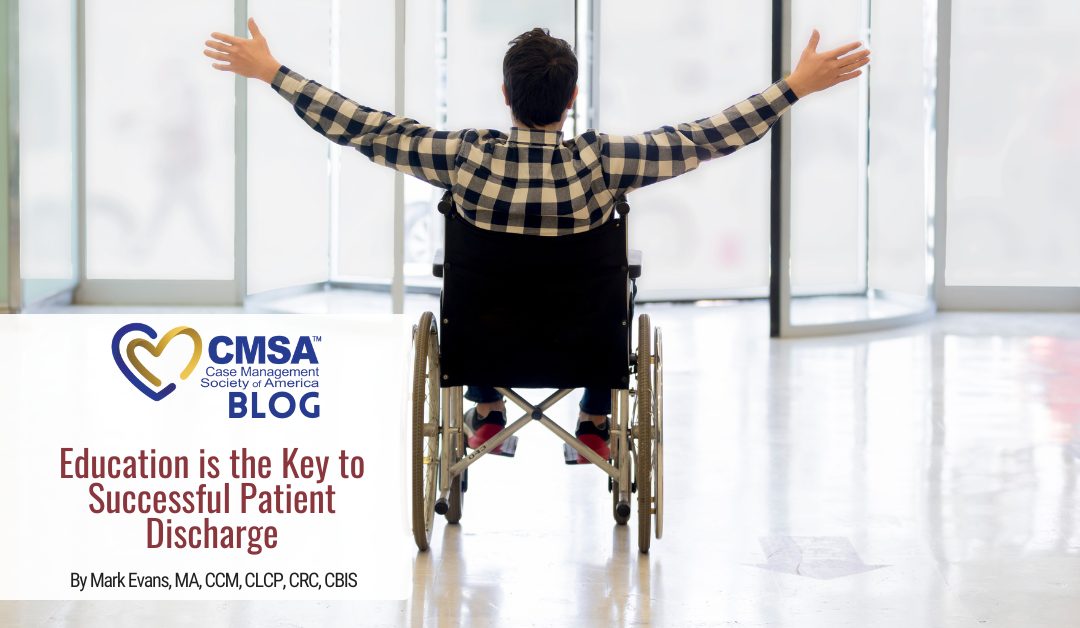It happens quickly and unexpectedly. A catastrophic illness or injury lands you or your loved one in the hospital. The length of stay in an acute care hospital may only be a matter of days, and the medical team recommends inpatient rehabilitation.
Once a patient arrives at the inpatient rehabilitation hospital, their length of stay may be anywhere from 10 – 13 days. At the time of discharge from inpatient rehabilitation, many, if not most, patients will require ongoing assistance, supervision, and therapy to continue their recovery and ensure that they remain safe and healthy. The last thing anyone wants is for a patient to go through rehabilitation only to end up back in the hospital once they go home. The challenge for all caregivers is: to provide the necessary education and training to the patient, their families, and any other caregivers; to give the patient the best opportunity for continued success in their home; and to not end up back in the acute care hospital.
The primary role of a Case Manager in an inpatient rehabilitation hospital is discharge planning. A large portion of planning involves ensuring the patient has appropriate equipment, necessary supplies, follow-up appointments, referrals for home health or outpatient services, etc. These tasks are coordinated with the therapy and medical teams and can be time-consuming. Case Managers may carry a caseload of anywhere from 12 – 17 or more on an inpatient unit.
In addition to setting up all the equipment, supplies, and services for the patient once they discharge, providing education and training is just as important in ensuring their continued well-being. As Case managers, we must be able to not only ask about those Social Determinants of Health topics but really understand how that will impact the overall well-being of the patients we serve.
For example… if we are going to expect a family member to assist a patient with transferring on and off the toilet, we must make sure that we are teaching them in a way that best suits them. We cannot have a “one size fits all” approach to training and educating. Case Managers are in the unique position of being able to spend significant time with the patient and the patient’s family and should be able to gauge their level of understanding and comprehension of the information we present them. The lessons we learn during our initial assessments and early interactions with families must shape the way we provide education and training throughout their stay. These lessons must also be shared with those caregivers working with the patient both during their stay in the hospital and at discharge.
For many patients and their families, this may be the first time they have encountered the healthcare system at this level and with this intensity. Having to help a loved one stand up and transfer to the toilet and manage their clothing, for example, can be very intimidating.
Seventeen years ago, my father was needing end of life care. My siblings were unaccustomed to helping someone with their personal care. When he needed help with wearing an adult brief, they were very hesitant and concerned. My sisters are both well-educated and mothers, however, that did not prepare them for what needed to be done. I am often reminded of that scene when working with families today. We cannot make assumptions about a family member’s ability and/or willingness to step in.
During their brief stay at the rehabilitation hospital, family members should be encouraged to step in when nursing staff is providing care and work side by side to ensure they are learning the skills necessary. They should observe as much therapy as they can. Case Managers should provide opportunities for family conferences to review the discharge plans and to make sure they are ready. If the patient is going to be receiving home health services at discharge, invite that provider in prior to the patient’s discharge from the hospital. Then, make that introduction between the provider and the patient. There should be a very smooth handoff from one level of care to another.
In conclusion, preventing hospital readmission and ensuring that our patients have the best opportunity for a good outcome is everyone’s responsibility. Case Managers, however, are in a unique position to fully understand the capabilities of families and other support systems and to make sure that education and training will meet those specific needs.
There is a continued focus on the patient discharge process as hospitals continue to tackle readmission reduction and prevention. The motivating factors are many: reduction of costs and penalties, optimization of payment, achievement of pay for performance measures and improvement of publicly reported quality indicators and patient satisfaction measures. “Potentially preventable readmissions” have been connected to insufficient or ineffective discharge strategies. Learn More: https://www.pathlms.com/cmsa/courses/28511
Bio: Mark currently serves as the Director of Case Management at Encompass Health Rehabilitation Hospital of Toledo. Previously, Mark worked in leadership roles in post-acute rehabilitation for individuals with brain and spinal cord injuries. Mark has been an active member of CMSA for many years. He has served on the Detroit Chapter of CMSA as President, Vice President and Member at Large. He has also served on the National Board of Directors since 2020. In addition, Mark has served as Chair of the National Awards Committee and Vice Chair of the Sponsor Committee. Mark serves on the CMSA Foundation Board of Directors. Mark has participated on task forces, advisory panels and a variety of other leadership roles throughout his career. Mark is a graduate of Eastern Michigan University and Wayne State University.

